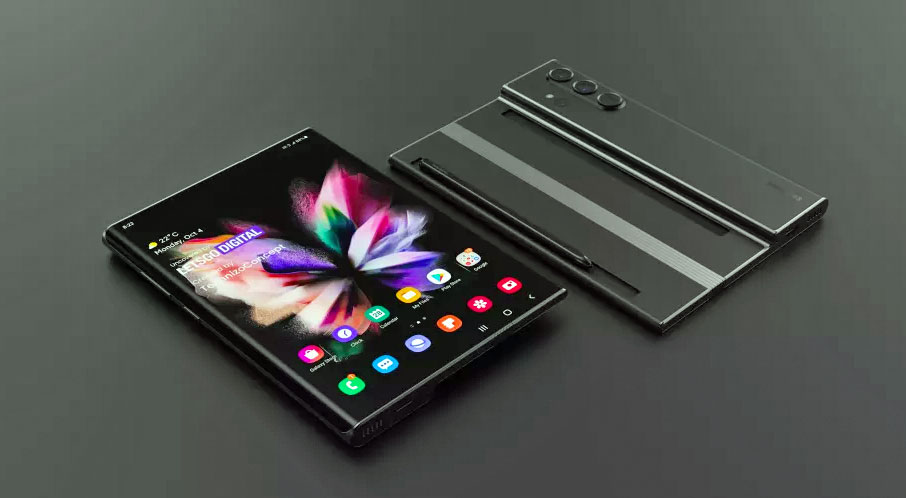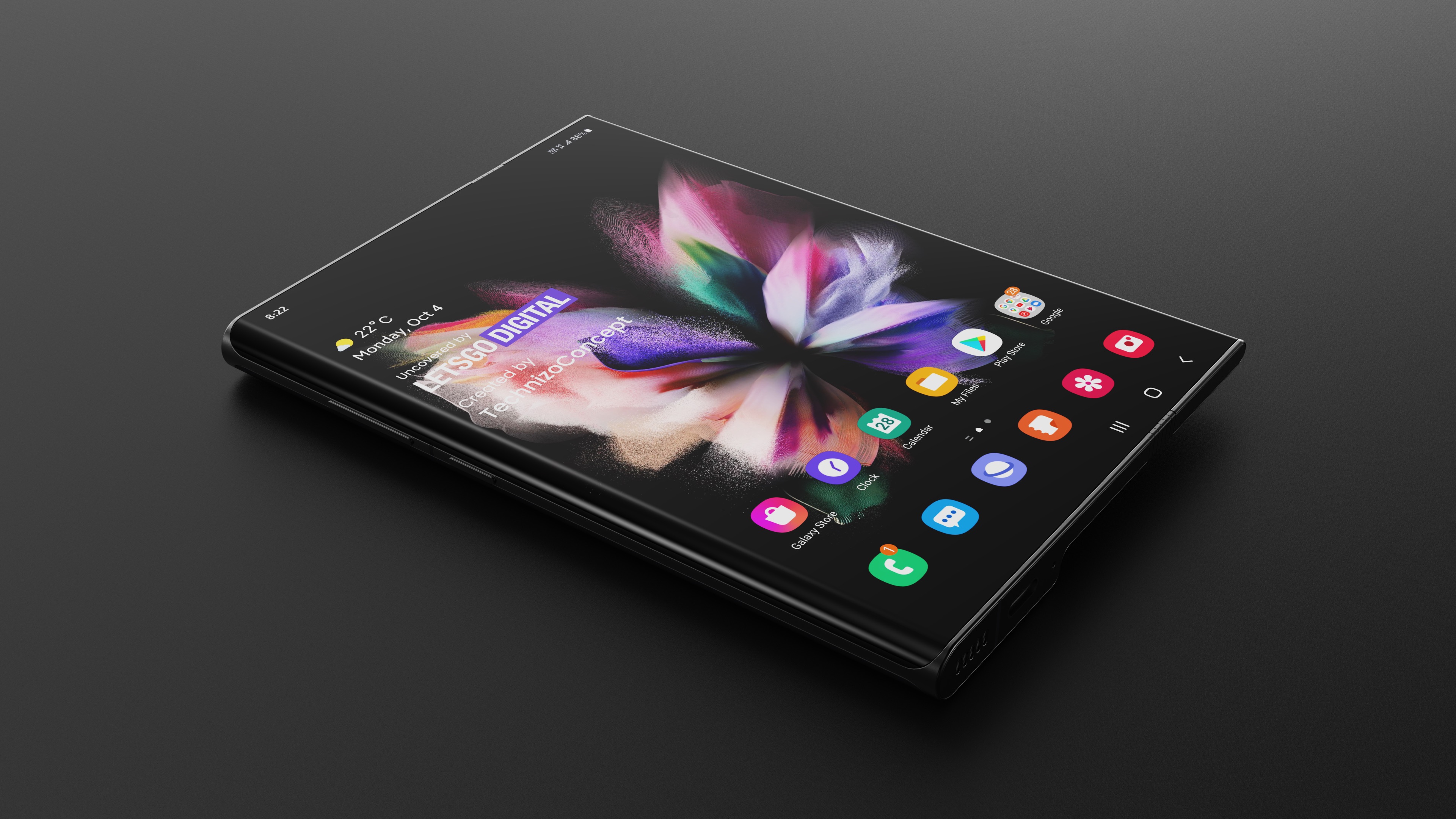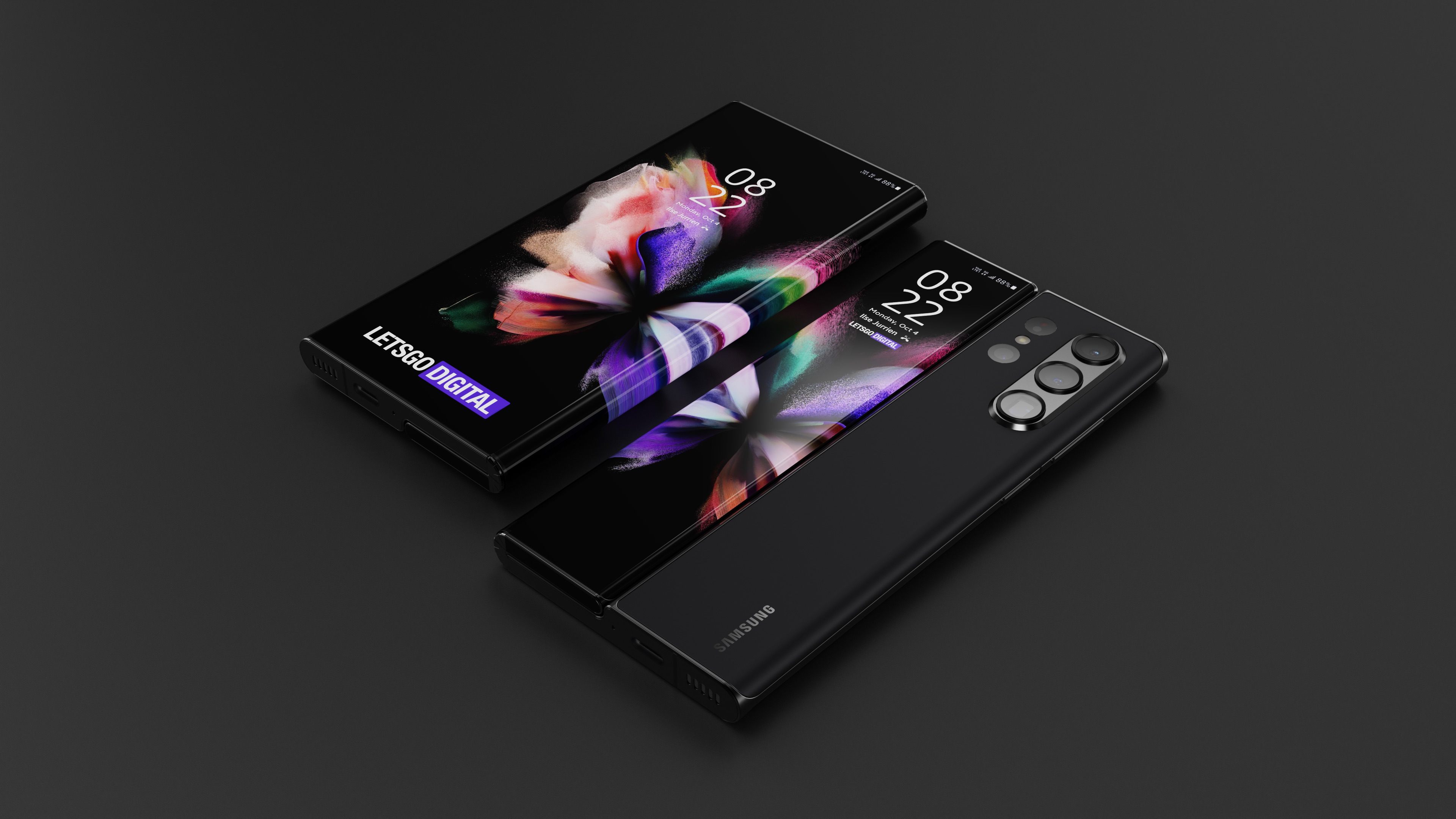Forget Galaxy Z Fold 3: This Samsung foldable could replace Galaxy Note
New patent shows how Galaxy Z Fold 3's S Pen could be taken a step further

Samsung's been patenting phone designs again, and this one looks like an exciting hybrid of the versatility of the current Galaxy Z devices with the convenient productivity of a Galaxy Note phone. This concept could eventually become the Galaxy Z Fold 4, but it's way too early to say.
The original patent, filed with China's CNIPA, was discovered last month by LetsGoDigital. Now we've got some tasty renders of the original illustrations, courtesy of Technizo Concept and LGD, to help us imagine how this phone would look and function.
This concept could eventually become the Galaxy Z Fold 4, but it's way too early to say. Here's a look at the design and features based on the patent.
- Samsung Galaxy Z Fold 3 review: Pros and cons
- Take a look at the best foldable phones we've reviewed
- Plus: WandaVision spinoff with Kathryn Hahn’s Agatha is in the works
LGD describes this phone as the "Galaxy Flex Note". That's based on a Samsung trademark for the name that was also filed earlier this year. The patent itself doesn't make any mention of the name.
The design uses what can be described as a "wardrobe-style" fold, with the larger fixed portion of the display on one side and the smaller display and camera array able to be folded around to sit on the back. Unfolding both sides of the device reveals the full breadth of the wraparound display, plus the cameras in case you want to take a selfie.
That does mean that the screen is a lot less protected than the inner panels of the Galaxy Z Fold 3 or Galaxy Z Flip 3, although it matches other foldables with different styles like the original Huawei Mate X.

So with the outside taken up by display and cameras, the S Pen is then located on a magnetic strip on the outside edge of the extended display. There's a cutout near the center of the device's back too so that the stylus can stay in place when the whole thing is folded up.
Sign up to get the BEST of Tom's Guide direct to your inbox.
Get instant access to breaking news, the hottest reviews, great deals and helpful tips.
The Galaxy Z Fold 3 can already use one of two different S Pens, and is the first Samsung foldable to be able to do so. However, there's no on-board pen holster for either version, with Samsung only offering a case that can contain the smaller S Pen Fold Edition. This patent would improve on that capability significantly were it to be brought to a future phone.
The in-display camera comes in two variants in Samsung's illustrations. One shows a blank screen, perhaps indicating an under-display camera like the one found on the Galaxy Z Fold 3's inner display. The other has twin punch-hole cutouts, something Samsung hasn't used on a phone before.

Interestingly, this would be the only camera array on the whole phone, going by Samsung's patent. The rear triple camera array seen in the renders is an embellishment added by Technizo Concept. Given the lacking quality of Samsung's current under-display camera, and the common nature of ultrawide and telephoto cameras on flagship phones, it would be a strange decision if Samsung actually made a foldable without a dedicated rear camera array.
Of course, with this being a patent, there's no guarantee this idea will ever become an actual product. It may not even appear on a Samsung phone at first either, since Samsung Display supplies flexible screen parts to other companies.
The next phone on the cards for Samsung could be the Galaxy S21 FE, but it's still uncertain whether or not this phone is actually coming. The next sure-seeming bet is the Galaxy S22, which we expect to see in January of next year. The S22 Ultra has also been the subject of S Pen-related rumors, as it's claimed this will be the phone to replace the canceled Galaxy Note 21 by offering in-built storage for a stylus.

Richard is based in London, covering news, reviews and how-tos for phones, tablets, gaming, and whatever else people need advice on. Following on from his MA in Magazine Journalism at the University of Sheffield, he's also written for WIRED U.K., The Register and Creative Bloq. When not at work, he's likely thinking about how to brew the perfect cup of specialty coffee.
